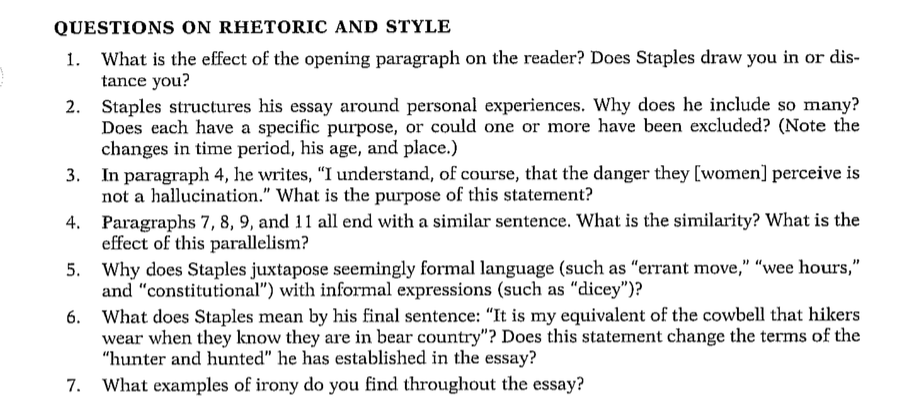Brent Staples’ essay, “Just Walk on By: Black Men and Public Space,” delves into the complex issues of social identity, racial profiling, and stereotyping in American society. Originally published in 1986, Staples explores the impact of his presence as a black man on the streets, highlighting the fear and prejudice he encounters from others. Through a compelling use of rhetorical devices, Staples effectively communicates the emotional toll of racial profiling, aiming to provoke thought and encourage a shift in societal perceptions.
Thesis:
Staples uses a combination of ethos, pathos, and logos to construct a powerful rhetorical analysis that challenges prevailing stereotypes and calls for a reevaluation of societal norms and prejudices. By sharing personal anecdotes and employing vivid language, he humanizes the experiences of black men who face unjust judgment solely based on their appearance.
Ethos:
Staples establishes his credibility through his own experiences as a black man navigating public spaces. He recounts instances where his presence triggered fear and discomfort in others, presenting himself as a reliable narrator. His background as a graduate student and writer adds further weight to his words, suggesting an intellectual perspective that demands consideration.
The author also refers to other intellectuals and scholars, incorporating external sources to bolster his argument. By integrating historical context and sociological insights, Staples reinforces the credibility of his analysis. This appeals to the audience’s sense of reason, encouraging them to reevaluate their preconceived notions about race and public spaces.
Pathos:
Staples’ use of pathos is particularly potent, as he skillfully taps into the reader’s emotions. By recounting personal experiences of being mistaken for a criminal or dangerous individual, he evokes empathy and understanding. The emotional impact is heightened through vivid descriptions of tense encounters, such as the nighttime incident with a white woman who perceived him as a threat.
Furthermore, Staples injects a touch of irony and humor into his narrative, using wit to underscore the absurdity of the stereotypes imposed on him. This not only engages the reader emotionally but also serves as a rhetorical strategy to disarm potential counterarguments, making it difficult to dismiss his perspective.
Logos:
Staples employs logos by presenting logical arguments that challenge the irrationality of racial profiling. He highlights the incongruity of assuming criminality based on physical appearance, emphasizing that his harmless intentions are overshadowed by society’s ingrained stereotypes. By appealing to reason, Staples invites readers to critically evaluate the irrationality of their own biases.
Additionally, he draws on historical and sociological evidence to support his claims, reinforcing the intellectual underpinnings of his argument. This reliance on logical reasoning strengthens the overall persuasiveness of his rhetorical analysis, encouraging readers to question societal norms and reflect on their own biases.
Conclusion:
In “Just Walk on By,” Brent Staples utilizes a sophisticated blend of ethos, pathos, and logos to conduct a compelling rhetorical analysis of the challenges faced by black men in public spaces. Through his personal experiences, Staples humanizes the issue of racial profiling, engaging readers on an emotional level. Simultaneously, his logical arguments and references to external sources contribute to a comprehensive and persuasive discourse that encourages a reconsideration of societal norms and prejudices.
By dissecting the impact of stereotypes on individual lives, Staples prompts readers to confront their own biases and strive for a more inclusive and empathetic society. The enduring relevance of “Just Walk on By” underscores the importance of ongoing conversations about race and the power of rhetorical analysis in fostering understanding and change.


